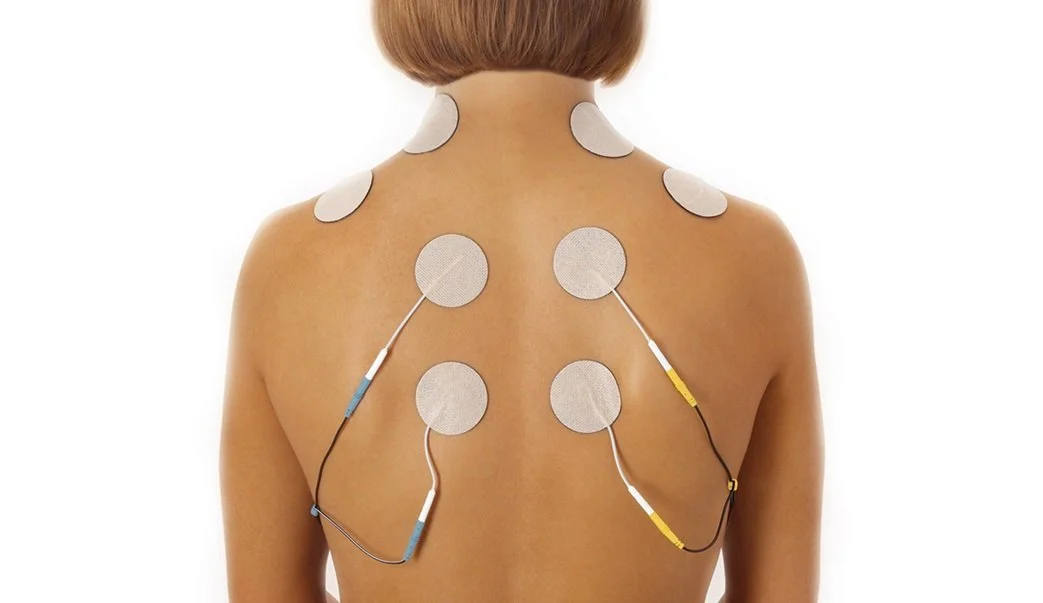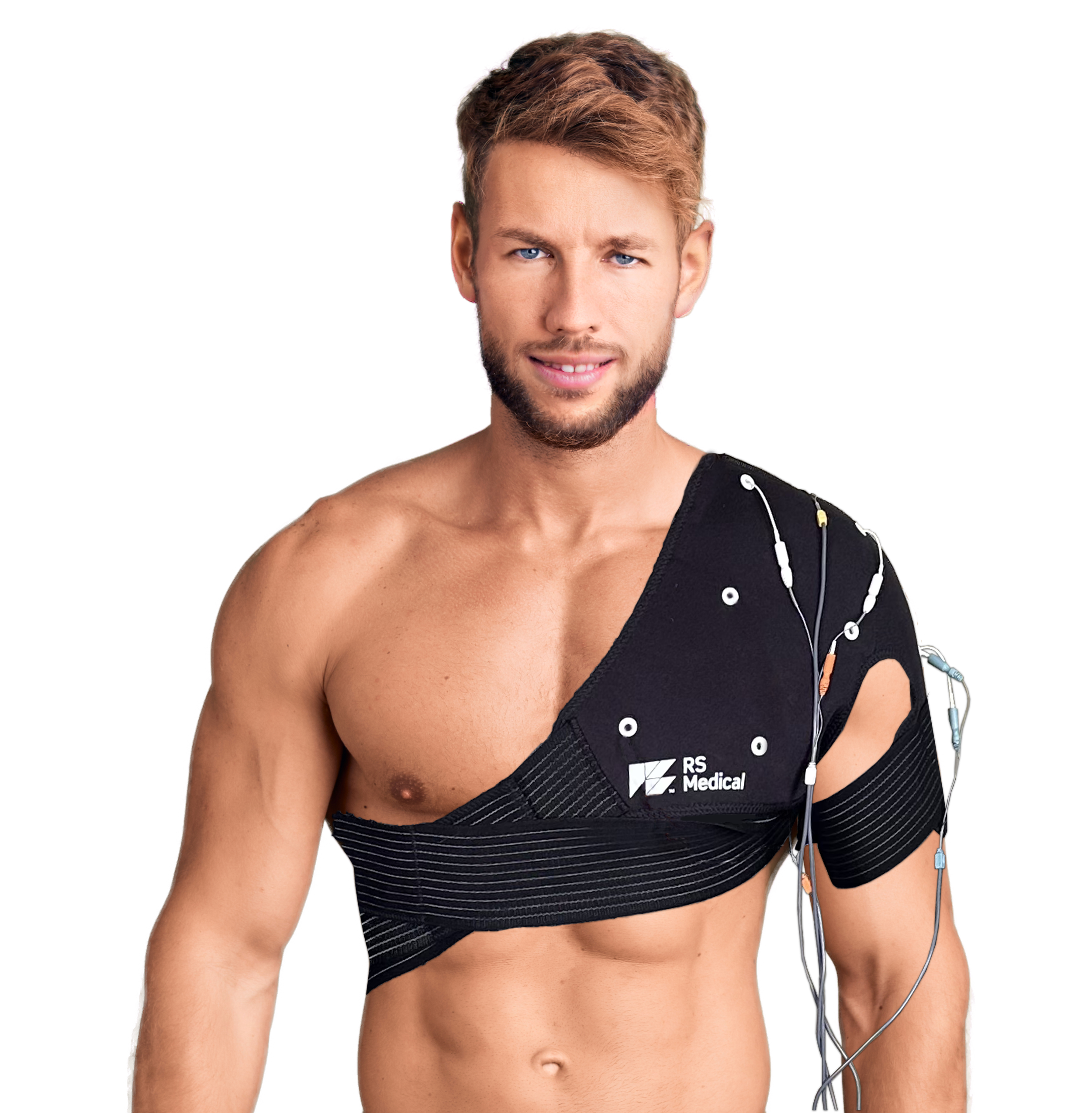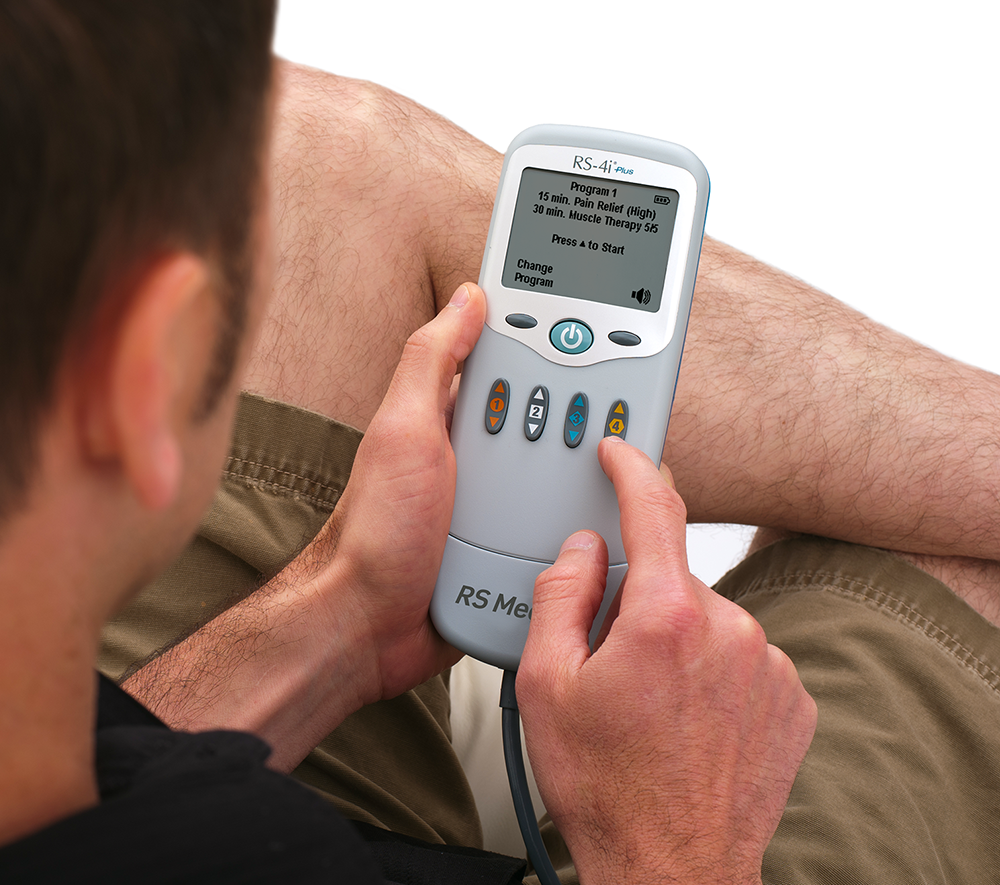Not all TENS units are created equal. The type of electrical signal they use — monophasic, biphasic, or asymmetrical — can impact how effective they are for pain relief. In this article, we break down the differences so you can make a more informed choice
Read MorePain. It affects 100 million American adults each year and costs $560-$635 billion annually according to the Journal of Pain. This estimate is based on the costs attributable to treating pain, plus lost and reduced worker productivity.
RS Medical has data from 26,800+ patients showing that 84% experience pain relief after 30 days of using the RS-4i® Plus. Using numbers from the Journal of Pain, this reduction amounts to over $100 million in savings.
The RS-4i Plus is not only an effective treatment option, it can help organizations save money in the long-run.
Read MoreTreating shoulder pain at home with an RS-4i® Plus certainly has its advantages. Unlike physical therapy, massage or other treatments that require an appointment, this device offers prescription-strength therapy at home, whenever you need it.
Adding an RS-SG Shoulder Garment makes taking treatments at home even easier. Here are 3 ways this garment gives an extra advantage to tackling painful conditions, like rotator cuff injuries or frozen shoulder, with the RS-4i Plus.
Read MoreWhen considering the range of non-opioid options available for treating patients who suffer from chronic musculoskeletal pain, healthcare providers are likely including OTC medications, physical therapy, massage and acupuncture on their list.
But there’s another non-opioid treatment that should also make the list – electrotherapy.
And there is one electrotherapy device that has a unique and truly advanced treatment – the RS-4i® Plus, which features a patented technology called Intersperse.
Read MoreOf the nearly 58 million VA patient appointments in 2016, pain was the most common medical condition requiring treatment. This sobering fact is not all that surprising given that more than 50 percent of Veterans receiving care are affected by chronic pain.
One prescription-strength treatment that has proven useful for chronic pain care at the VA is the RS-4i Plus. This self-managed electrotherapy device, which works less like a TENS unit and more like in-clinic systems, can relieve pain, increase blood flow, and reduce muscle spasms safely and effectively within the same 35-minute session.
Here are the numbers that show the impact . . .
Read MoreNot surprisingly, there’s a wide range of prices for TENS units, and those are influenced by the performance – that is, the sophistication of a device’s features and the variety of programs it offers. Prices range from under $100 to several thousand dollars, but picking the right device doesn’t have to be challenging with a bit of guidance about how to compare units.
Read MoreKnowing that all TENS units are different is a start to learning about transcutaneous electrotherapy. Taking a deeper dive into what makes them different reveals that there are varying therapeutic distinctions between devices, and these distinctions can be used to hone in on which device is the best for addressing a patient’s particular condition.
Read MoreThe Gate Control Theory of Pain says that pain sensations are involved in an intricate series of communications between the central nervous system and peripheral nervous system. Sitting in between are a series of “gates” that can either transmit or block pain signals. Science has shown that hyper-stimulating certain nerve fibers can help close these gates, and therapies such as massage, acupuncture and electrotherapy are all thought to be effective ways of temporarily inhibiting pain signals.
Read More








